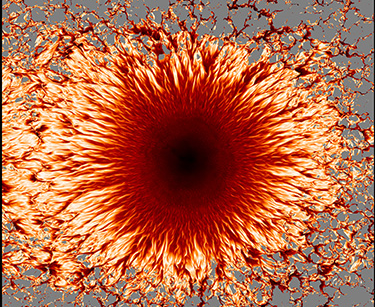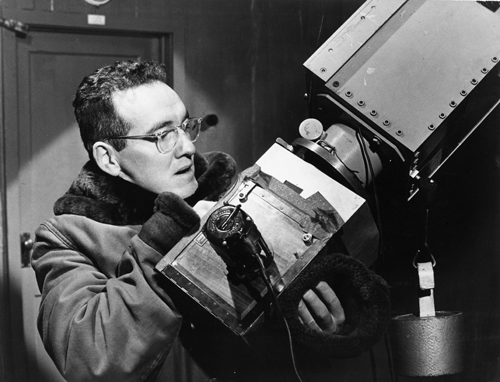NCAR’s solar lab to celebrate 75th anniversary
Free public events August 31-September 3
Aug 20, 2015 - by Staff
Aug 20, 2015 - by Staff
BOULDER – The High Altitude Observatory (HAO) of the National Center for Atmospheric Research (NCAR) is celebrating its 75th anniversary, a milestone in an ongoing quest to learn about the Sun’s behavior and its impact on Earth.
Free public events include two showings of “Solar Superstorms” about the Sun and its influence on Earth at the University of Colorado Boulder’s Fiske Planetarium on August 31 at 7:00 p.m. and 7:45 p.m. Three HAO scientists contributed to this film. In addition, John Grunsfeld, associate administrator for the Science Mission Directorate at NASA and a five-time space shuttle astronaut, will give a public talk at CU’s Glenn Miller Ballroom on September 2 at 7:00 p.m.
Other anniversary events, all of which are free and open to the public, will take place September 1-3 at NCAR’s Center Green facility (3080 Center Green Drive). The agenda will feature a September 1 keynote talk on HAO history by former University Corporation for Atmospheric Research (UCAR) president Thomas Bogdan, presentations by leaders from area solar research institutes, and a discussion of current and future issues such as space weather impacts on society.

In 2009, NCAR scientists and collaborators for the first time modeled a sunspot in a 3D computer simulation. The model shows the intense outward flow of magnetic activity. (Image by Matthias Rempel, ©UCAR. This image is freely available for media & nonprofit use.)
The events on September 2, known as “AstroBoulder Day,” are especially aimed for the public. They are being offered in collaboration with the Boulder Solar Alliance, which includes HAO, the National Solar Observatory, the University of Colorado Boulder, the Space Weather Prediction Center at the National Oceanic and Atmospheric Administration, and several smaller members.
More detail about the anniversary events, as well as historic HAO photos, can be found here.
HAO, which predates NCAR by 20 years, provided a spark for Boulder to become a worldwide hub for solar and space physics.
"HAO’s 75th anniversary is an occasion to celebrate the entire solar and space research community here in Boulder," said HAO Director Scott McIntosh. "The many eminent scientists here are working with collaborators around the world to advance our understanding of the Sun and its influence on Earth."
HAO’s rich history began modestly in 1940 when Harvard graduate student Walter Orr Roberts and his adviser, astrophysicist Donald Menzel, developed a small solar observing station in Climax, Colorado, high on the Continental Divide. When NCAR was created in 1960, HAO became a central part of the new national research center. Roberts was named NCAR’s first director.
Later that decade, HAO moved its instruments to the Mauna Loa Observatory in Hawaii to take advantage of more consistently sunny and cloudless weather for viewing. But the main research continues to be conducted in Boulder. Scientists want to learn more about the magnetic fields deep in the solar interior, the subsurface forces that drive the approximately 11-year solar cycle, the events leading up to solar storms, and the influence of the Sun’s energy on Earth’s atmosphere, among many other research questions.
"HAO is a critical component of NCAR," said NCAR Director James Hurrell. "Quantifying the role of solar variability in space and Earth’s climate requires investigations that span the entire system from the Sun’s interior to Earth’s surface."
"HAO has been and will continue to be a vital force in conducting groundbreaking science that deepens our understanding of the Sun and its impact on Earth," said UCAR Interim President Michael Thompson. "As we work with our collaborators to design new observing instruments and to advance data analysis and theoretical understanding, we look forward to solving essential mysteries of the Sun and its influence on Earth."

Walter Orr Roberts takes photos in the 1940s of the solar corona with a 5-inch coronagraph at HAO’s first observatory in Climax, Colorado. (©UCAR. This image is freely available for media & nonprofit use.)